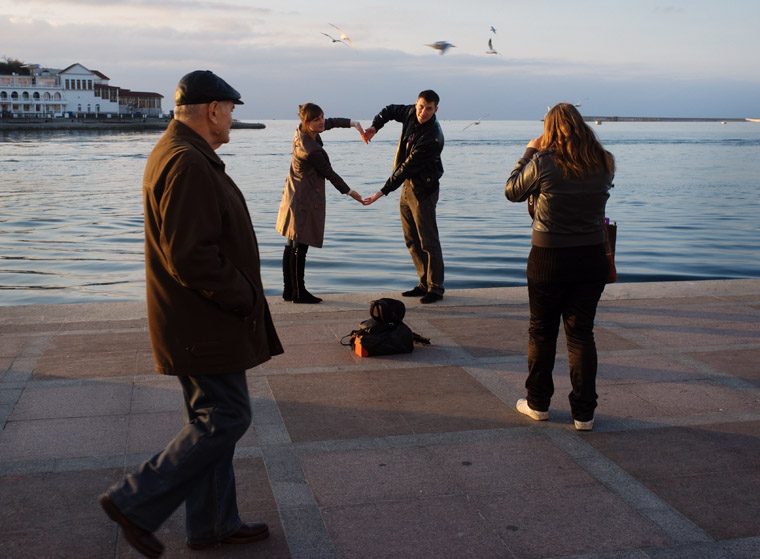As I took my journey around the Crimea and decided to try out a daily online diary for the first time, I was wondering whether it was a good idea or not. That's because I was really there, as a method of working, to take pictures on medium format film, and if at the same time I took a moment out to take a quick, inevitably slightly different, digital version of the same scene and posted it in the road diary, that might undermine in some way the final image. I guess it's the age old nervousness of opening up your ideas sketchbook before you show the final version - it might affect the way people saw the final. That's especially true because I had a wide angle lens for the medium format film that let me take pictures I couldn't with the (single fixed lens) digi camera. Yesterday's picture of the Kurgan in the Chekhov landscape is an example - in the road diary I had to post a 'cropped' version because of the lack of wide angle lens on the digi camera - which was fine for the sake of keeping the diary going, but in this image I much prefer the wider landscape shown in the medium format film.
Anyway, here are four of the film versions from some images I posted in the daily diary, some of them are close to the digital version - but the film version will blow up large nicer and has a somewhat different tonality - sometimes they are just different. In the case of the steps image, the magpie is only there in the film version.
I had first framed the steps simply because I liked the scene, and saw a kind of symbolism in the steps, but then the magpie landed on the wire above, and I immediately started thinking about 'luck', finding happiness or treasure - and so forth. I took a few pictures, and prayed he would flutter down and land on the steps. Amazingly, he did what I asked. Only for a moment before he hopped off down the steps, but long enough for me to take a frame on the medium format camera. Not long enough to take the same image for the 'road diary' on digital, but that was fine - I had had enough luck already, and I was happy.
All of this of course just happens to tie in rather nicely with Chekhov and yesterday's kurgan image, which is rather lucky!
So here are four images in their 'proper' film versions. First, the guide to the underground caves of Adzhimushkay (here is the original post that talks about the extraordinary story of the place). Then the magpie, followed by Koktebel (aka 'the promised land'), and then, Kerch.
BTW, in the Koktebel image of the roofs and the sea, there is just the tiniest hint of Crimea's Tartar past, a merest suggestion of the romantic, in the spike between the two roofs:























